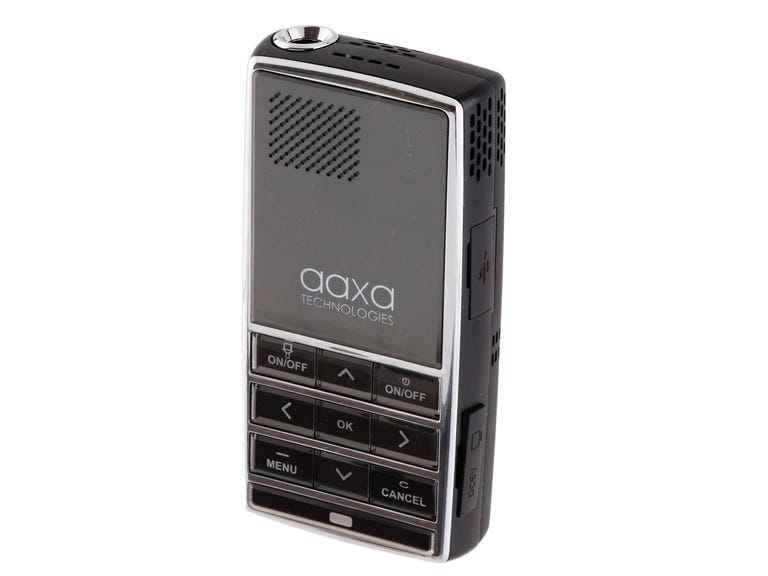 Why You Can Trust CNET
Why You Can Trust CNET Aaxa Tech L1 Laser Pico Projector review: Aaxa Tech L1 Laser Pico Projector
Aaxa Tech L1 Laser Pico Projector
Pico projectors were supposed to be the next big thing, but they haven't taken off as quickly as some might have thought. Part of the problem is that although they're tiny, they just can't produce a bright enough image to be that useful. For that reason, we had high hopes for Aaxa's L1 since it uses a laser-based light source and an LCoS imager. Yes, it costs more than your typical pico projector does, but for cutting-edge technology, you have to pay a little extra--in this case, about 40 percent more.
The Good
The Bad
The Bottom Line
Let's start with the good stuff. The Aaxa is nice and compact. It measures 2.1 inches tall by 4.2 inches wide by 0.8 inch thick and weighs 170 grams, including its rechargeable battery (you get about 90 minutes of projecting time from the battery). It offers a relatively high 800x600-pixel resolution and has the capability to play files directly from a USB thumbdrive--Aaxa includes a 2GB thumbdrive with the projector. Most importantly, the Aaxa has built-in support for displaying AVI, WMV, MP3, and JPEG media files, as well as Word, Excel, PowerPoint, and PDF files. So if you stick to the compatible file formats, you don't need to lug a laptop around. We like that it has USB drive support, but an SD or a microSD card slot would've been a nice addition.
If you do want to connect the projector to a laptop, Aaxa includes a VGA adapter in the package. Unfortunately, an adapter cable for the iPhone-iPod will set you back another $20; for a $600 projector, Aaxa should've thrown the cable in as a freebie.
Its controls--including five-way navigation buttons--are built directly onto the top of the L1. Its onscreen interface isn't slick or terribly easy to use, but we were able to access files and project them on the wall.
Putting our quibbles with its user interface aside, the real issue we had with the projector is its picture quality. The quality is not that it's bad compared with that of other pico projectors; it's just not any better. Most disconcerting is that the laser creates a shimmering effect that gives the picture a noisy look. As with all pico projectors, you can project an acceptable image to about 20 inches to 26 inches wide; however, if you try to go larger, it starts to get pretty dicey--even in a darkened room. The projector simply can't produce an image that is bright enough or sharp enough. (For what it's worth, the image has a 4:3 aspect ratio instead of a 16:9 wide-screen aspect ratio, but aspect ratio on a projector is less of a sticking point than it is with a monitor.)
To be clear, this is a first-generation laser pico projector from Aaxa--and one of the few available on the market--so presumably the technology hasn't reached its potential. Again, this isn't a bad pico projector, it's, unfortunately, just as middling as the rest of them yet it costs significantly more; you can buy a half decent laptop or an iPad for about $600 and both will produce much better image quality.
On a positive note, from a features standpoint, the Aaxa has a good foundation, and the sound the projector emits from its tiny built-in speaker is acceptable for watching movies; it has a standard 3.5mm jack if you'd prefer to connect headphones or an external speaker. The company just has to find a way to improve the picture and reduce the price while making the user interface easier to use.


